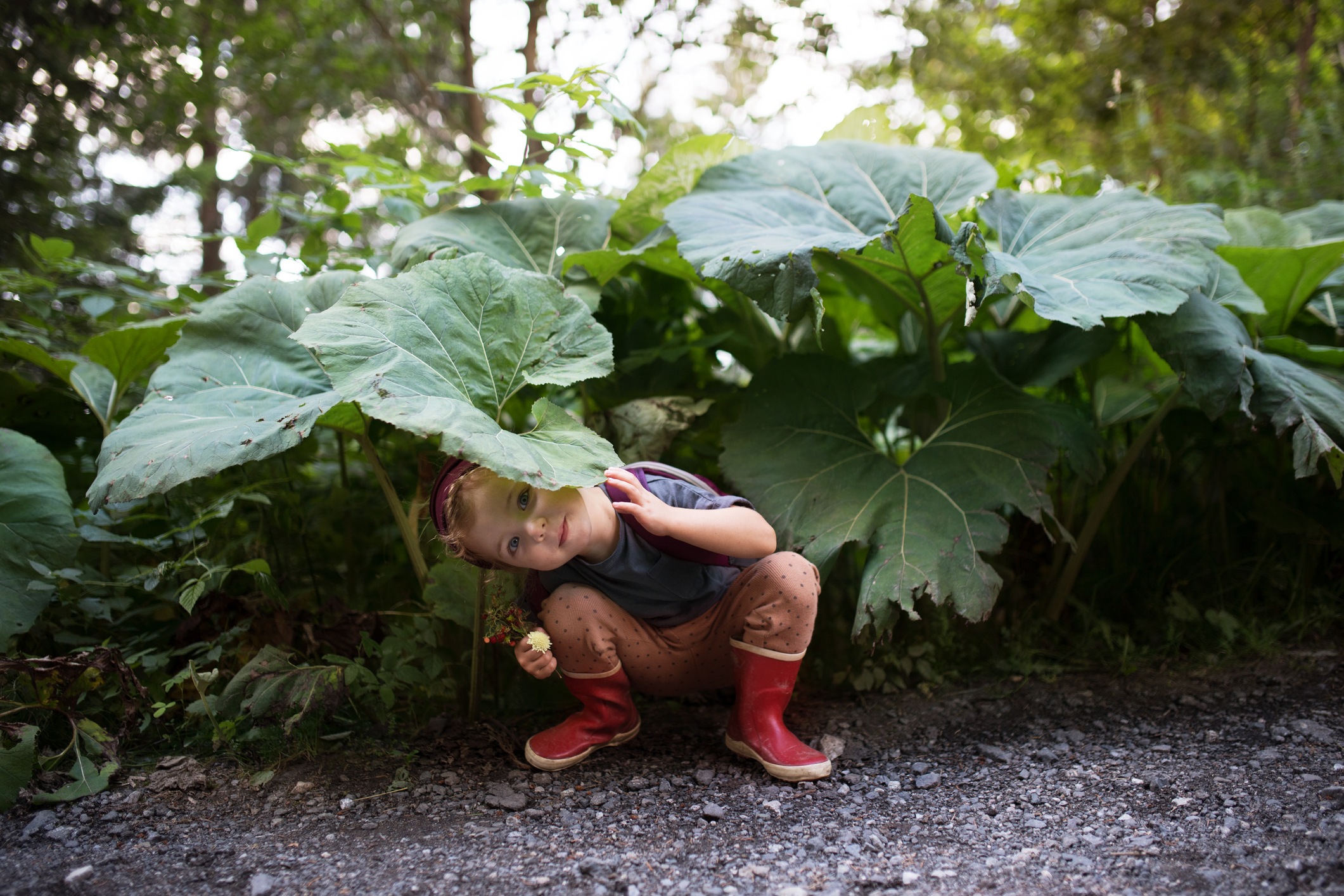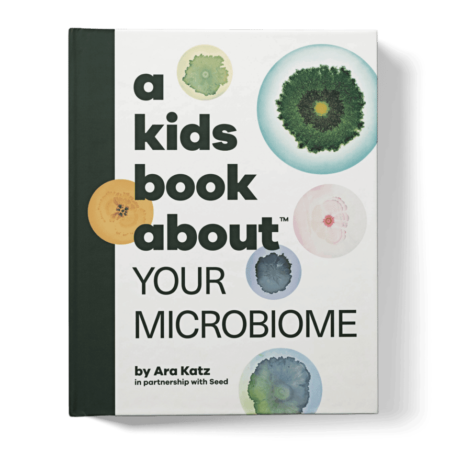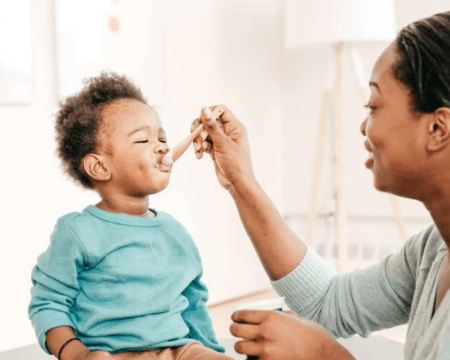Ara Katz wants kids to love their microbiomes
In a new kids’ book, the Seed co-founder helps kids explore the miraculous world of gut bacteria—and teaches them how to nourish these “invisible friends.”

Halfpoint Images/Getty Images
Did you know that the human body has approximately the same amount of bacterial cells as human cells? (This is always a nice reminder when your child’s behavior makes you question if an alien has invaded their body :)) These non-human organisms living in and on you are microbes—38,000,000,000,000 of them are bacteria.
And what they do, how they got there, why we need them and how we can help them thrive is changing so much of what we believed up until now—even how we parent.
As a mom, entrepreneur, author of A Kids Book About Your Microbiome and someone who gets to work alongside some of the leading scientists in the field, I see the microbiome as a radical shift of perspective.
With some foundational education, it can empower us as parents with an entirely new compass to guide our decisions and help us make daily choices, especially as our kids grow.
Your child’s real-life superpower: Their microbiome
Seeded at birth, the first microbes your child is exposed to are generally the birthing parent’s—through birth, skin-to-skin contact and breastfeeding practices. From the day seeding begins and through the first few years of life, factors like mode of birth (vaginal or C-section), exposure to antibiotics, breastfeeding, early nutrition and the environment (urban spaces versus continuous exposure to nature), all influence the development of your child’s microbiome.
Between the ages of 3 and 5 years old, the microbiome begins to stabilize into what’s called a “steady state microbiome.” From there, factors like diet, exercise, medicine and sleep all continue to influence the composition of the microbiome for the rest of your child’s life.
Covid demonstrated how quickly our orientation to the world can change due to a single microbe.
Our lives have been some daily permutation of masks, testing, hand washing, sanitizing, distancing, Zooming—all while trying to navigate this new world as humans ourselves. And while a small number of microbes can be pathogenic and harmful (like SARS-CoV-2), the majority of microbes, especially bacteria, are actually beneficial and critical to our health.
As now-parents who were once children of the antibiotics generation, it’s extraordinary to think that—thanks to science—our kids will grow up with a new perspective to navigate their world and new ways to be empowered in their health.
The more we discover, the more the microbiome reveals itself as a real-life superpower. And what child doesn’t want to be a superhero?
How to nurture your child’s ‘invisible friends’
One of the most impactful ways you can nurture the trillions of microbes that work hard to keep your child healthy is through diet and nutrition.
Microbiome research has demonstrated some clear and actionable dietary guidelines:
- High abundance of diverse sources of plant fibers and polyphenols (like vegetables, walnuts, pomegranates and berries)
- High intake of fiber and microbiota-accessible carbohydrates (like broccoli, Brussels sprouts, beans and sweet potatoes)
- High intake of Omega-3 fatty acids and monounsaturated fat (like salmon, sardines, avocados and olive oil)
- Low in sugar, preservative agents, processed foods, food additives
- Low in saturated fat
An overload of sugar and processed food can hurt the balance of the gut microbiome, which makes it hard to digest food and for a child’s immune system to function. Though the science is still growing, minimizing processed foods where possible and offering your child a diet that includes a variety of fruits and vegetables can support a healthy and diverse microbiome.
Beyond diet, everything from stress levels, to exercise, sleep and even your dog can impact the health of your kiddo’s microbiome.
How to help your child’s microbiome thrive
- Go outside and play: When your child is outside, they are exposed to many different microbes. Some scientific theories posit that greater contact with environmental microbes can supplement our own protective microbiota, participating in immune functioning and helping to build adaptive immunity. A recent study among daycare children found that increasing the biodiversity of their outdoor environment to be more representative of nature, positively impacted the children’s gut and skin microbiomes, which in turn, affected their immune system. Some scientists believe that increased exposure to nature may even help prevent allergies and asthma attacks. A handful of dirt can contain billions of microbes—so encourage your kids to get a little dirty!
- Brush their teeth: Getting your child to brush their teeth isn’t always easy, but its importance goes further than you think. The mouth is the second most diverse part of the body (after the gut), with over 700 types of bacteria living in different areas, like the tongue, cheek, throat and even saliva. These bacteria work to prevent smelly breath, cavities and to make sure nothing harmful finds a place to live. Regular brushing helps keep the mouth microbiome in balance—and a healthy mouth microbiome can even protect other parts of the body like the heart and lungs!
- Get quality sleep: Your microbes are happiest when you have a regular sleep schedule. In fact, microbes even follow their own circadian rhythms. Rest helps them stay in balance, and they can even help your child sleep more soundly.
- Enjoy time with pets (if they’re not allergic)!: Pets have their own unique microbes, just like us! Pets carry lots of microbes that are different from ours and can help teach your child’s body what’s OK and what might make them sick.
- Incorporate a probiotic: While fermented foods and beverages are great additions to diet for other reasons, most do not qualify as a probiotic. Probiotics are scientifically defined as beneficial microbes that have been shown through scientific research to provide specific health benefits. Specific strains have been studied in children for a variety of benefits for gastrointestinal health, antibiotic-associated diarrhea, dermatological conditions and more. It’s important to research specific strains and learn more about the products you purchase, as not all probiotics are created equal.
While the term ‘probiotic’ has caused a lot of confusion, we at Seed Health are working hard to bring greater clarity, education and transparency as we continue our research and development of next-generation probiotics.
It’s incredible to recognize how far the field of microbiome science has come in such a short amount of time relative to its impact. For centuries, we feared and over-sanitized because of what we didn’t know. And though COVID has certainly made us all aware of the invisible world of microbes, we can now temper our fear with an appreciation and understanding of how beneficial microbes also support and sustain our health.
While the microbiome is trending across health, beauty, food and even home and pet care, I wrote A Kids Book About Your Microbiome because I wanted not just kids, but also grownups to understand the basics so that we can all be more informed as we guide our child’s health. When we understand something foundationally, not only can we answer all the “whys” from our kids, but we ourselves feel empowered to ask better questions and make better choices.
And while your kiddos may not always recognize the superpowers required to be a parent, you can remind them that you too are a Superorganism!
Sources:
Dahl WJ, Mendoza DR, Lambert JM. Diet, Nutrients and the Microbiome. 2021. Progress in Molecular Biology and Translational Science. pp. 237-263, doi:10.1016/bs.pmbts.2020.04.006.
Deo PN, Deshmukh R. Oral Microbiome: Metagenomics in Oral Health. 2019. Journal of Oral and Maxillofacial Pathology 1, no. 1: pp. 122-128, doi:10.21694/2578-1448.17004.
Hesselmar B, et al. Pet-Keeping in Early Life Reduces the Risk of Allergy in a Dose-Dependent Fashion. 2018. PLOS ONE 13, no. 12. doi:10.1371/journal.pone.0208472.
Kilian M, et al. The Oral Microbiome – an Update for Oral Healthcare Professionals. 2016. British Dental Journal 221, no. 10: pp. 657-666, https://doi.org/10.1038/sj.bdj.2016.865.
Microbiology by numbers. Nat Rev Microbiol 9, 628 (2011). doi:10.1038/nrmicro2644
Roslund, M., Puhakka, R., Grönroos, M., Nurminen, N., Oikarinen, S., & Gazali, A. et al. (2020). Biodiversity intervention enhances immune regulation and health-associated commensal microbiota among daycare children. Science Advances, 6(42), eaba2578. https://doi.org/10.1126/sciadv.aba2578
Satokari R. High Intake of Sugar and the Balance between Pro- and Anti-Inflammatory Gut Bacteria. 2020. Nutrients 12, no. 5. p. 1348, https://doi.org/10.3390/nu12051348.
Sender R, Fuchs S, Milo R. Revised Estimates for the Number of Human and Bacteria Cells in the Body. 2016. PLoS biology. 14(8), e1002533. doi:10.1371/journal.pbio.1002533
Smith RP, et al. Gut Microbiome Diversity Is Associated with Sleep Physiology in Humans. 2019. PLOS ONE 14, no. 10. doi:10.1371/journal.pone.0222394.
Zarrinpar A, et al. Diet and Feeding Pattern Affect the Diurnal Dynamics of the Gut Microbiome. 2014. Cell Metabolism 20, no. 6. pp. 1006-1017, doi:10.1016/j.cmet.2014.11.008.
Written by Ara Katz
Ara Katz is the author of A Kids Book About Your Microbiome and the co-founder and co-CEO of Seed Health, a microbial sciences company pioneering applications of microbes for human and planetary health. A serial entrepreneur, it was Ara’s breastfeeding experience that led her to the microbiome and inspired her personal mission to explore the importance and impact of microbes. Ara lives in Venice, Calif. with her husband and five-year-old son, Pax.



